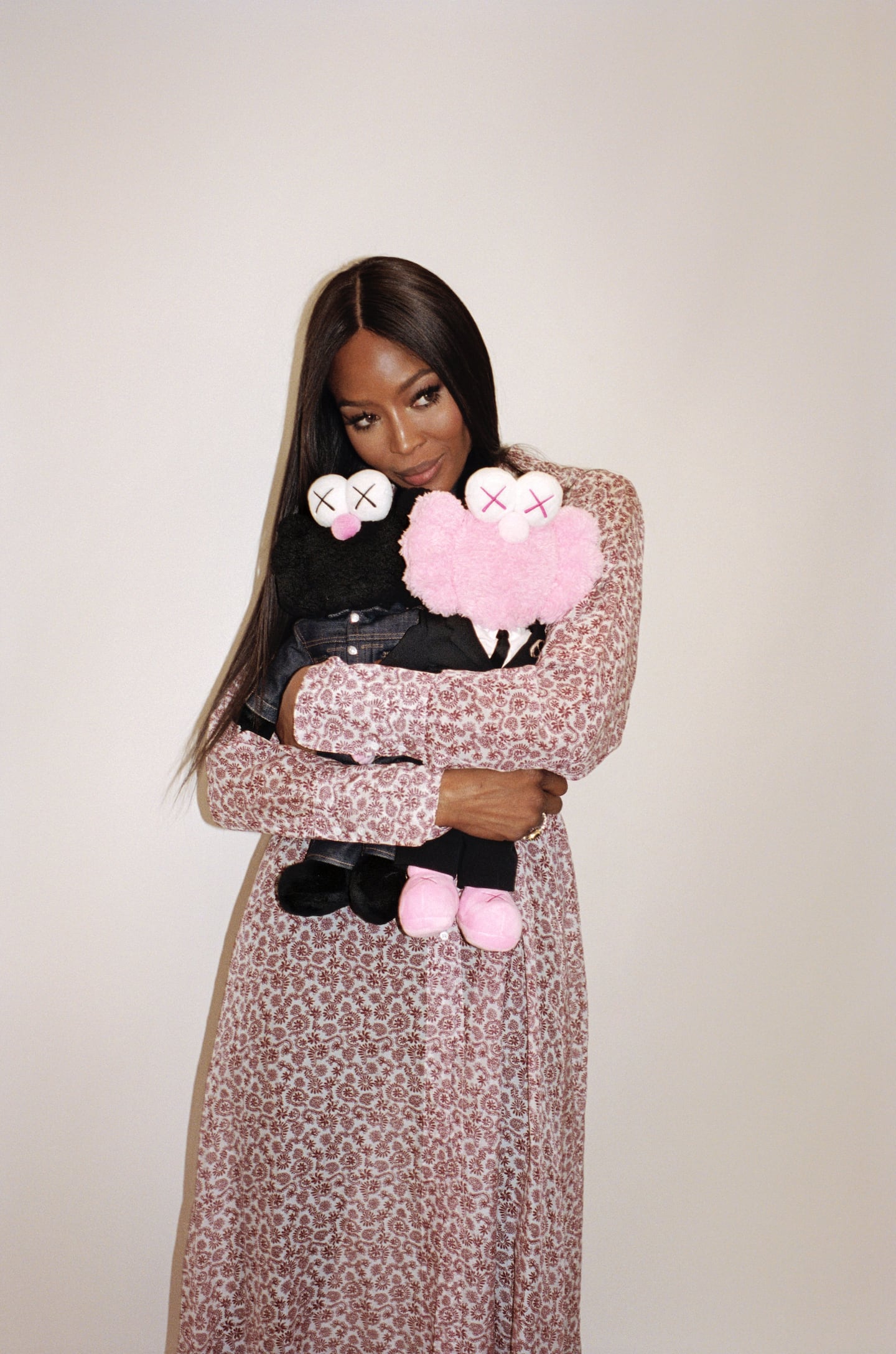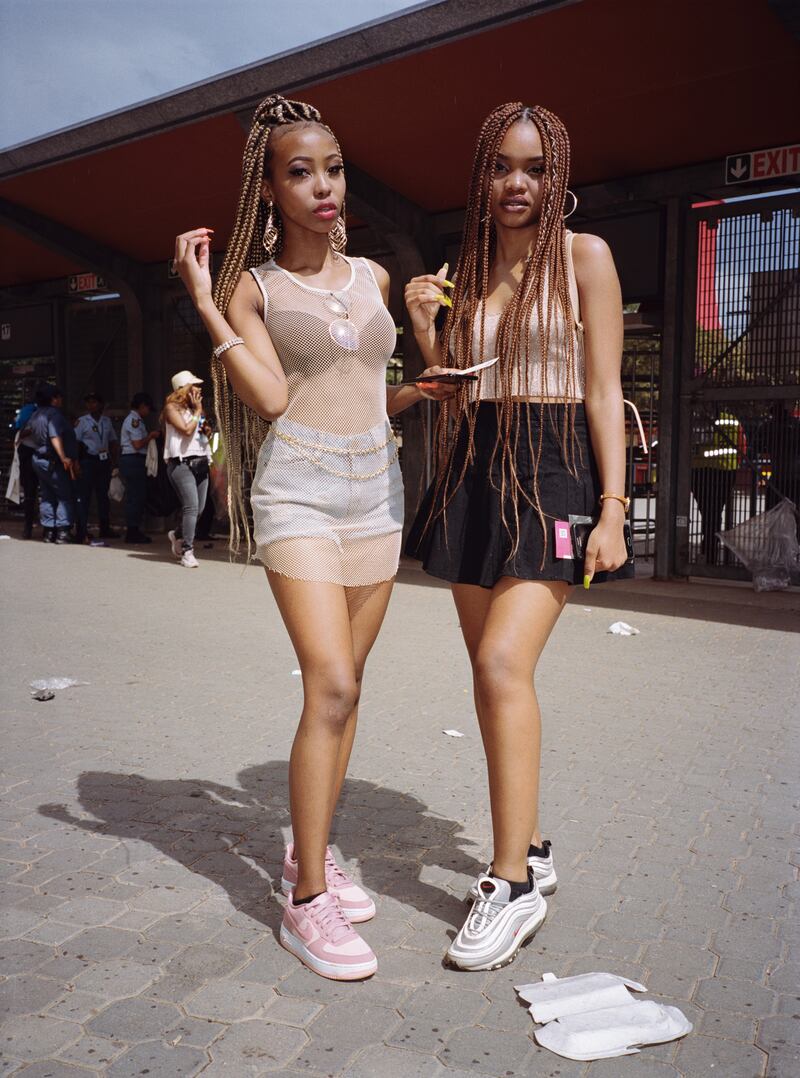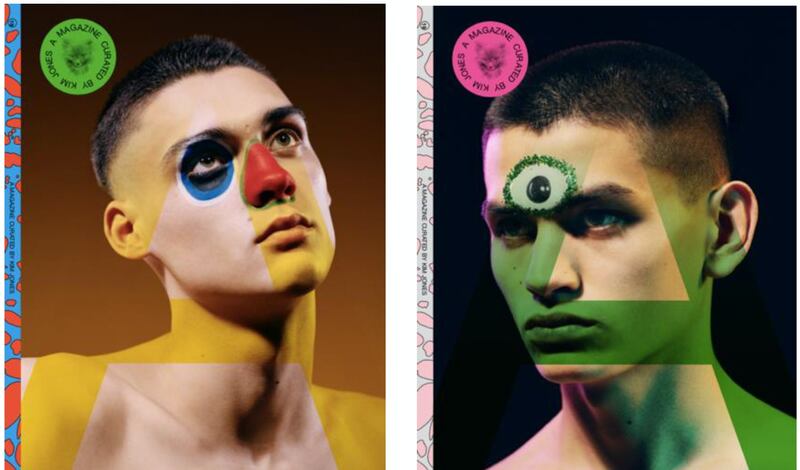
The Business of Fashion
Agenda-setting intelligence, analysis and advice for the global fashion community.

Agenda-setting intelligence, analysis and advice for the global fashion community.

PARIS, France — When A Magazine Curated By asked Kim Jones to guest edit its latest issue, the Dior Men creative director called on his inner circle — think Virgil Abloh, Elton John, Kate Moss — to help him put together an A to Z of his inspirations, passions and curiosities.
To kick off his alphabet, Jones turned to Naomi Campbell for a discussion about A for Africa, where the designer spent much of his childhood, in countries including Botswana, Tanzania, Ethiopia and Kenya, inspiring a life-long passion for the continent. Meanwhile, the British supermodel has invested both time and money in Africa, supporting infrastructure projects, advancing women's rights and promoting the local fashion industry.
Here, from the latest issue of A Magazine Curated By, Campbell talks to Jones about the most pressing issues facing the continent, the state of the African fashion industry, and her "grandfather-granddaughter" relationship with former South Africa president Nelson Mandela.
Kim Jones: What is your first memory of Nelson Mandela?
ADVERTISEMENT
Naomi Campbell: I was at school in London, and I saved up my pocket money to go and buy a ticket for Live Aid – 25 quid, 1984. I went to Wembley Stadium and saw all the images of Ethiopia and Mandela and then I remember the Elvis Costello-produced song 'Free Nelson Mandela.' I didn't really know much; I'd only heard bits and bobs about apartheid in South Africa.
Then in 1990 when he was released, I was living in New York, and Robert De Niro, Eddy Murphy and Little Steven gave a reception for him. So I bought two tickets and took Bob Colacello from Vanity Fair with me. I didn’t meet him or anything, but I got to see him walk into the TriBeCa Grill with Winnie Mandela, and I just remember this sort of golden light behind his head.
A few years after that in 1994, I got asked to be one of the judges of Miss World in South Africa with Iman, Lord Snowdon, and some actors and actresses. I was told that I could bring someone along, and a couple of people I asked said, 'Oh no, it's too dangerous.' But I asked Herb Ritts, and he said yes. We were there for about seven days. I got to know Blair Underwood, one of the actors who was a part of the group. And I'd heard so many people speak about the ANC (African National Congress), so I went with him and his friend Sharon to one of their gatherings in town. After, I decided I wanted to donate the money I was making on that gig to them.
When I got offstage at Miss World, I was told, ‘You are leaving tomorrow to Johannesburg; the president wants to meet you.’ Then I got a call from Bobby Shriver telling me the same thing – I couldn’t believe it. So off Herb and I went to meet President Mandela in Johannesburg, which was the beginning of a 20-year grandfather-grand- daughter relationship – a very dear relationship to me.
KJ: How did that friendship inform the work you do in Africa?
NC: At the beginning, I didn’t really know what I could do. After I met Mandela, I started getting all sorts of jobs in Africa; and one of those, I chose to do with David Bailey – it was a contract. So off we went to South Africa again, and anytime I was going I would let Mandela know. Then he made me a part of the Nelson Mandela Children’s Fund, to which I would give a certain amount of money annually. When I was initiated into that, he decided at the press conference, without me knowing, to give me this honour as his ‘honourable granddaughter.’

Courtesy A Magazine Curated By
At the time, I didn’t know so much about philanthropy, but I was doing the rounds at children’s hospitals and meeting women – I liked it. I used to cry in the beginning, and he told me not to as he said the children would think they’d upset me. But there, they were very ill still smiling and singing and baking cakes for me. It put everything into perspective for me. He never judged me; he never told me off. There were some downs in my life, and he would simply say, ‘You have to come here, come back to Africa.’ So, I would go. He was the humblest human being I’ve ever met.
ADVERTISEMENT
KJ: How did his passing affect you?
NC: I remember in 2010, the family called me and asked for my passport details. I asked, ‘What for?’ They said, ‘To prepare.’ I remember thinking he was immortal, like he was never going to go away. It struck me how serious they were. But even knowing that, I was never really prepared for him to go.
I found out he had died when I was on a plane from Australia back to London, and I really felt very lost. I felt like my place of solace and peace and safety had been grabbed from under my feet. Who was I going to run to? Who was going to give me advice like him?
For a few years, I wasn’t quite sure what I was supposed to do, until I started to think about our conversations and realise what it really was that he wanted me to do. Because I didn’t quite understand it in my 20s. And then I woke up one day and thought, ‘I think this is what he wanted me to do; I think this is what he was saying.’ And it felt right.
I had been doing it for a long time, quietly and privately, until I thought that it was time to use my voice as much as I could to help change the perception and narrative of how people view Africa – the great continent of Africa.
KJ: Can you tell us about your experiences with Mandela 100 and what lead up to that?
NC: At the Mandela 100 concert, there were so many different people doing different things: from Kweku Mandela, who I’ve known since he was a teenager, to Nelson’s grandsons and granddaughters, and Mama Winnie. When they called, I said, ‘OK, this is the legit one,’ so I got on board in conjunction with Global Citizen.
For me, I wanted it to be the best celebration of him that it could be. Some people had met him; some people haven’t. I remember over the years, I had received many phone calls from many well-known people asking to meet him when they went to South Africa, and I would do it. I would introduce them because I knew that Nelson was someone I was supposed to share. He was not someone to be selfish with.
ADVERTISEMENT
The only ever fashion show I missed for Versace when Gianni was alive was when I went to South Africa. I thought that he would be mad at me, but actually he knew that President Mandela loved his Versace printed shirts, so he sent me with some. So in 1998 when Gianni Versace died, I decided to do a tribute to him with the Nelson Mandela Children’s Fund in South Africa: about 70 of us – models, hair and makeup, agents – flew from New York (most of us) to Cape Town where we did the show. Kate, Christie, Shalom, Amber, Karen – the list goes on – and Alek Wek, who I realised had her voice to share. If anyone were ever to remember anything I ever did for them, it was that I introduced them to such a great man.
One day we were in Monaco, and I said to Bono to come and meet me early in the morning at the Hôtel de Paris. We went and knocked on the door of a room. I stood back, and Mandela opened the door. Bono just fell to the ground! [Both laugh].
KJ: And in terms of fashion, for me, I love to visit different parts of Africa in younger communities, as it is so progressive, so new. Because you’ve seen so much, what are your thoughts on African fashion today?
NC: I just see the need and the desire and the smarts and the loyalty. If only they had the things that we have in the Western world. The emerging designers there just don’t get the opportunity because it is just untapped and ignored – and there is no rhyme nor reason. The perception has just gone on for years and years, and something has just got to give.
I feel so inspired when I am there. No matter how many planes I've taken or how exhausted I am, I get this surge of energy that is uplifting and inspiring. It drives me to help and make sure that they get the right opportunities they deserve and learn the skills they need to do so. There are so many incredible designers! There are the old veterans like Marianne Fassler from South Africa coming back – she is like the grande dame. There is Kenneth Ize and Tiffany Amber from Nigeria; Thebe Magugu and Rich Mnisi from South Africa; the list goes on.
There is the grace and the elegance and the tradition. I really have so much admiration and respect – I am in awe. And if everyone does their little part 'it' will happen. I'm so happy and optimistic when I see that things are moving. When Jonathan Newhouse got on stage and says that Vogue Africa is coming. People are opening their eyes; people are spreading their wings. If any- thing happens in my lifetime to make me happy before God takes me, I just want to see that happen.
KJ: There really is such incredible style and talent. It’s so unique and full of tradition. I remember living there as a four-year-old and seeing Maasai warriors and Afar tribesmen. They were one some of the first visions I ever had of what style means. Now when I go to Cape Town or Kenya and other parts of Africa, I see the way that young people are working with their heritage to create newness. I haven’t been to West Africa yet, but it’s something I’d love to do. You completely ‘get’ African style and you know how to make it look modern too, which is so important. Now the kids are getting so much information from the internet, but then there is great manufacturing, traditional makers, all these different talents that I really believe in.
What are the most pressing social issues for you? Aside from poverty, of course.
NC: Africa needs equal rights for women, whilst understanding that there are traditional tribes that you have to respect. They need to offer new opportunities to women, so that apart from running the home they are able to learn a skill and feel independent.
There are some strong voices, like Ngozi Okonjo-Iweala who sits on the boards of Standard Chartered Bank and Twitter and was at the World Bank for 25 years. I’ve admired her for so long. What a brain – I totally understand why she has been admired and respected by so many for so long. She loves the idea of what we are trying to do and is very supportive of it. Because for me, I am learning all the time along the way. I am a work in progress, but I know what my end vision is that I want to see.

Courtesy A Magazine Curated By
There is no handbook, but I believe in the idea that if you don’t ask, you don’t receive. The way this world is evolving today, people are very involved and very aware, and they want to do the right thing now. As well as making money and succeeding in business, they are ready to combine it with a humanitarian side. We have a continent that people once thought had no influence on their businesses, on their brands. And that was completely wrong, and now it all goes hand in hand with music, art, fashion and tech. The internet has changed it all, and now people can see – there is no hiding anymore.
KJ: I get a lot of kids from different African countries writing to me on Instagram asking me for advice on fashion – they know that I love the continent; I lived there for a number of years. I’ve spent a lot of time messaging with them, and if I’m in the town or city they are in, I am very happy to go and meet them and see their work.
NC: We need more of you! We need more Kims. I remember that from when we were in Vietnam: You can go and buy something that costs two dollars and make it look incredible.
KJ: One of the kids in South Africa was telling me how much it costs them to make things, and it really is not very much money to us. I asked him to put a business plan together, and I gave him the money to start it up. It’s a way of getting things out there, seeing things and having something new out there. For me, it is exciting to see that. People like Lee McQueen were very good with me like that, so I want to do the same.
NC: It’s funny you should mention that. I remember when Lee came to see me in Kenya, and he was doing his African- inspired show. He went to all the Maasai chiefs. He loved the marriage necklaces; he bought so many. I don’t know where they are now. I think Africa really allows you to let go of all your inhibitions and lets you be you; it makes you want to be a part of the culture and your surroundings. There is so much to do and to see and to honour and to develop. Actually, André Leon Talley is coming with me to Lagos soon, and I am really excited to see how he feels and to see it new through his eyes. He’s never been to Africa before.
KJ: When you talk about the way Africa energises you, where do you go to step out and find that calm?
NC: When I’m driven, it’s West Africa. It’s Ghana; it’s Lagos. Johannesburg and Cape Town have always been places of work for me, but Kenya and Tanzania for me are places of rest and seeing my kids in the orphanages — that is what I do there.
I shot there recently in November with Jamie Hawkesworth. It's the second time I'd shot there with Edward [Enninful], and it didn't really feel like working. I'm just in awe; it is such a stunning continent – it is so beautiful. The peace. You know that peace that you feel with the stillness? I don't think I've ever felt that peace anywhere else. You don't want to look at a clock; you don't care about time. Time just stands still. You are in the middle of real, genuine peace. You search for that in meditation, but in Africa you can just genuinely be in it.
KJ: I’ve spent most of my time in Southern and Eastern Africa, so I need to spend more time in West Africa. And we should go to Ethiopia together.
NC: Yes, we should! You understand the music, and you understand the art – you are going to get it straight away. I’m going to Dakar, Senegal in May, which is also very beautiful for textiles. I’m going as Kehinde Wiley is opening Art Annex, a place for artists to come from all over the world to learn skills. Everyone seems to be on the same page, and I think we are all coming together and supporting each other. At the end of the day, we have to unite to make this happen.
This article first appeared in Issue N°19 of A Magazine Curated By.

Issue N°19 of A Magazine Curated By
Related Articles:
[ Kim Jones on the Legacy and Futurism of Luxury CurationOpens in new window ]
[ Naomi Campbell Urges Vogue to Launch African EditionOpens in new window ]
[ How Naomi Campbell Found Her FootingOpens in new window ]
[ Turning the Focus Back on South AfricaOpens in new window ]
From analysis of the global fashion and beauty industries to career and personal advice, BoF’s founder and CEO, Imran Amed, will be answering your questions on Sunday, February 18, 2024 during London Fashion Week.
The State of Fashion 2024 breaks down the 10 themes that will define the industry in the year ahead.
Imran Amed reviews the most important fashion stories of the year and shares his predictions on what this means for the industry in 2024.
After three days of inspiring talks, guests closed out BoF’s gathering for big thinkers with a black tie gala followed by an intimate performance from Rita Ora — guest starring Billy Porter.